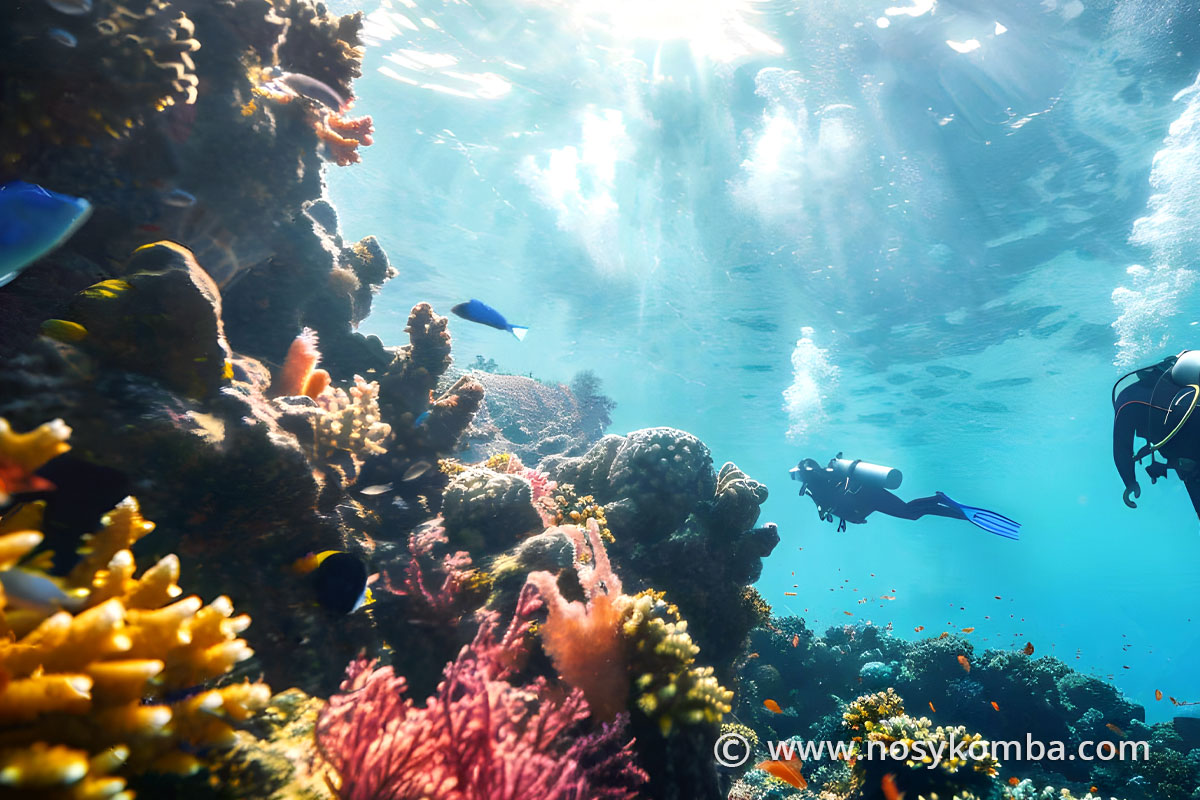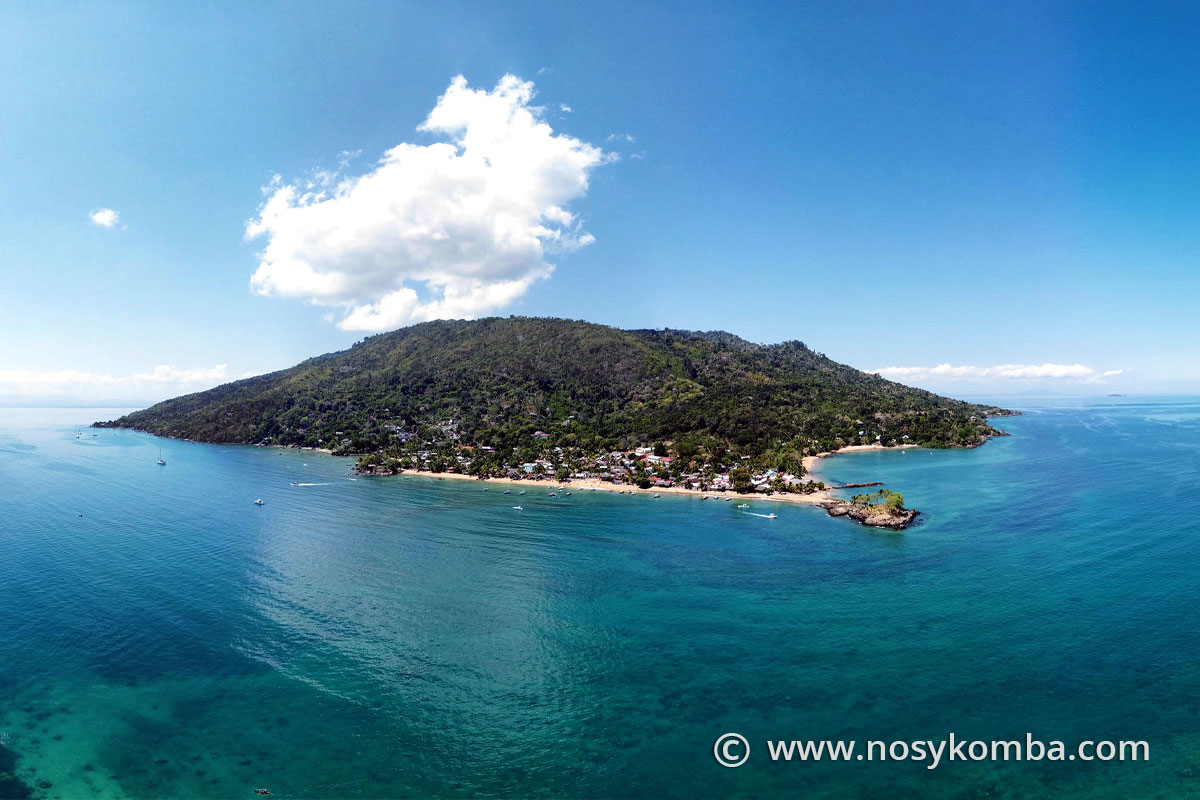
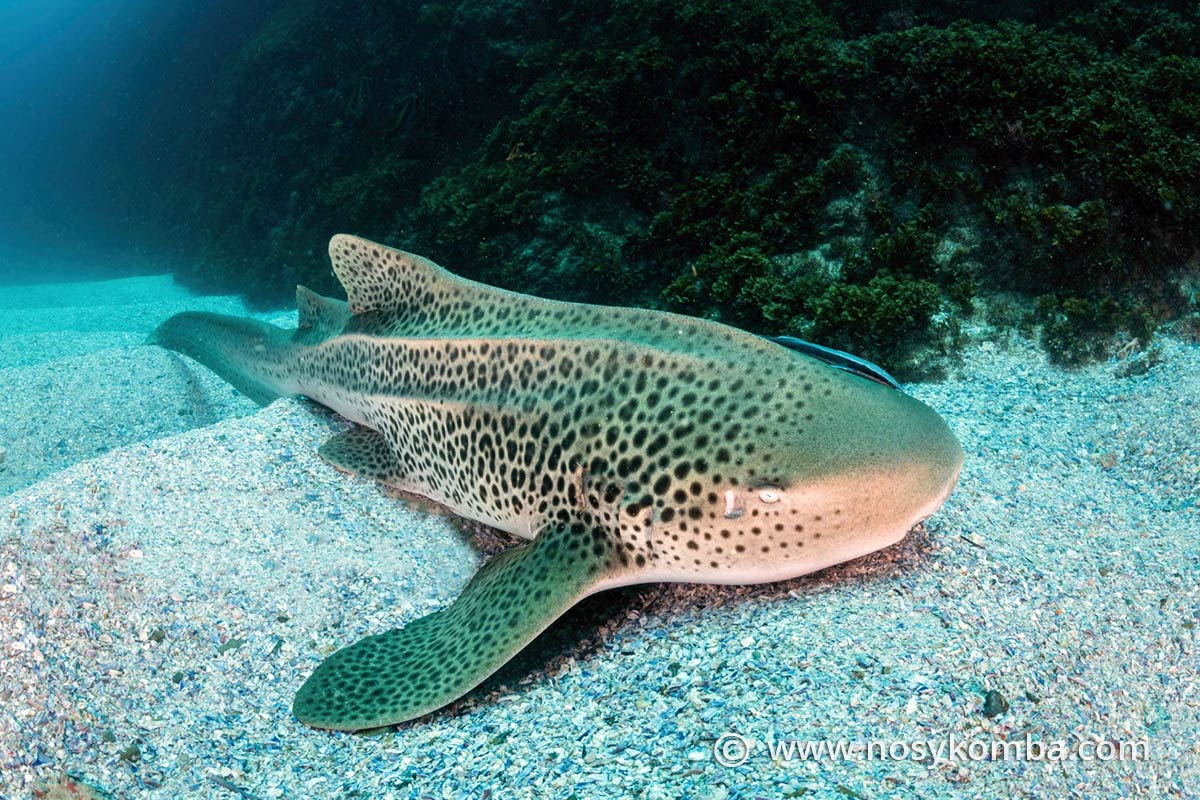
Why dive at Nosy Be?
Impressive marine biodiversity
The seabed around Nosy Komba and Nosy Be is one of the richest in the Indian Ocean. By diving in these waters, you will discover a varied biodiversity:
- Sea turtles: graceful and peaceful, they are often approached by divers.
- Whale sharks: These gentle giants of the sea, harmless and majestic, are present mainly between September and December.
- Tropical fish: Thousands of multicoloured fish populate the reefs, creating striking tableaux vivants.
- A variety of corals: Hard and soft corals form veritable underwater gardens.
- Beginners : The calm, shallow waters provide a safe introduction to diving.
- Intermediate divers: Reefs rich in marine life offer exciting exploration.
- Experts: Drift dives, vertiginous drop-offs and wrecks add a dimension of advanced exploration.
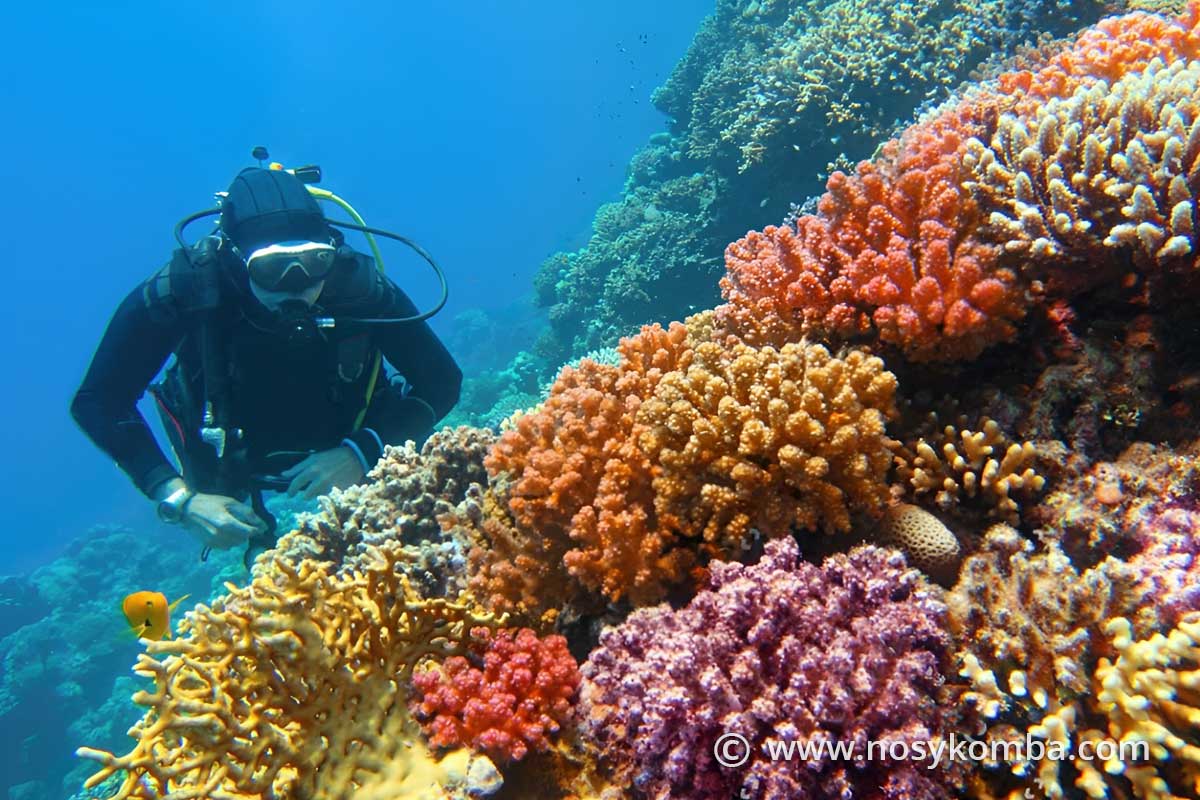
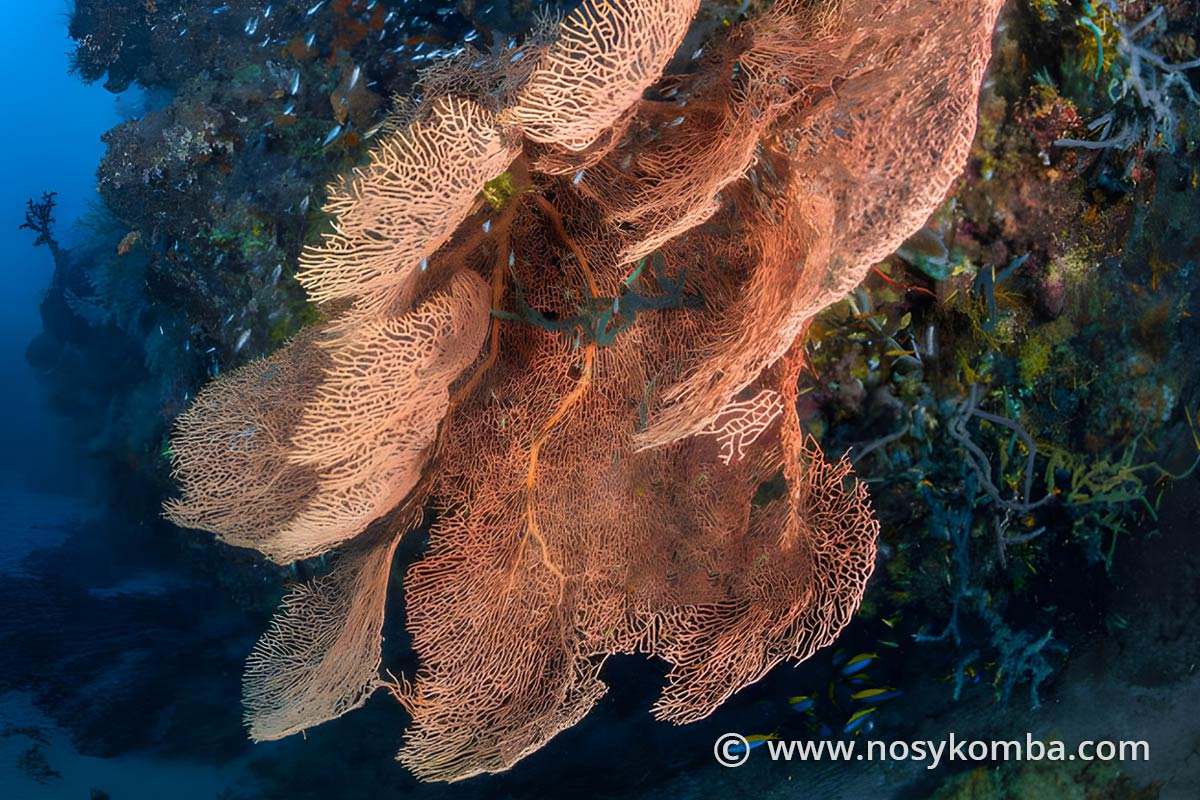
When is the best time to dive in Nosy Be?
Diving is possible all year round, but certain periods are particularly favourable:
-
- September to December: Whale shark season.
- April to June: Best underwater visibility and calm conditions after the rainy season.
- July to August: Although visibility may be slightly reduced, temperatures remain pleasant.
Top scuba diving spots in Nosy Be
-
Tanikely: A must-see marine reserve
The island of Tanikely is a protected marine reserve that delights divers and snorkellers alike.
- Depth: Between 5 and 20 metres, ideal for beginners.
- What you’ll see: Turtles, moray eels, starfish, clownfish and spectacular coral.
- Why it’s special: The biodiversity is dense and the visibility excellent, making every dive fascinating.

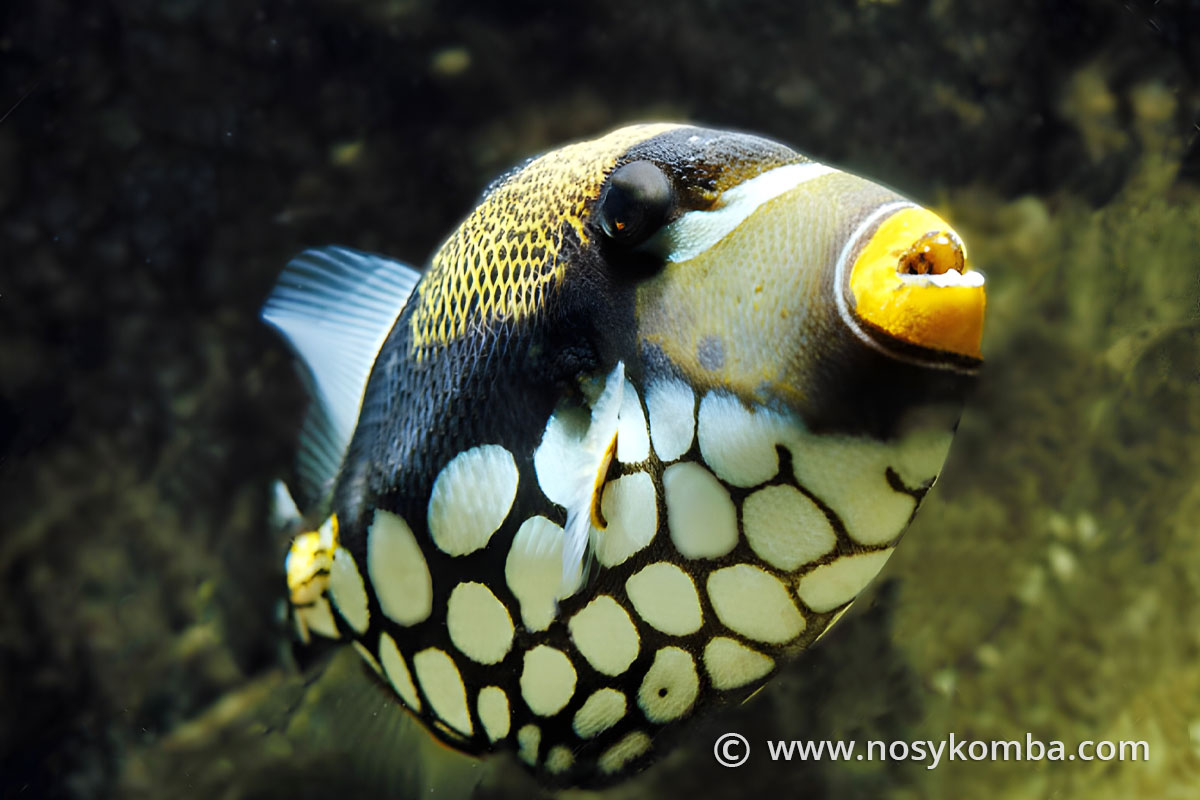
-
The Mitsio Islands: exceptional underwater landscapes
To the north of Nosy Be, the Mitsio Islands are famous for their volcanic formations and unspoilt reefs.
- Depth: up to 40 metres, perfect for experienced divers.
- Highlights: The ‘basaltic organs’, impressive geological formations, and reefs home to rare fauna.
- When to go: All year round, but visibility is best from April to November.
-
Nosy Iranja: A pelagic encounter
Renowned for its immaculate beaches, Nosy Iranja is also an interesting diving spot for seeing bigger fish.
- Underwater attractions: Rays, barracudas, jacks, kingfish and a chance to spot dolphins while sailing to the sites.
- Highlights: Opportunity to see dolphins during the crossing, as well as humpback whales and whale sharks in season.
-
Nosy Sakatia: an experience with green turtles
Close by to the west of Nosy Be, Nosy Sakatia is a great place to spot turtles.
- What you’ll find: Sea grass beds where sea turtles feed, colourful coral reefs and nudibranchs.
- Ideal for: Beginners and experienced divers alike, thanks to a variety of sites.
-
The drop-offs of Nosy Be
For lovers of deep diving, the drop-offs around Nosy Be are a must.For lovers of deep diving, the drop-offs around Nosy Be are a must.
- Depth: Up to 50 metres and more.
- Special features: Giant gorgonians, reef sharks and pelagic fauna.
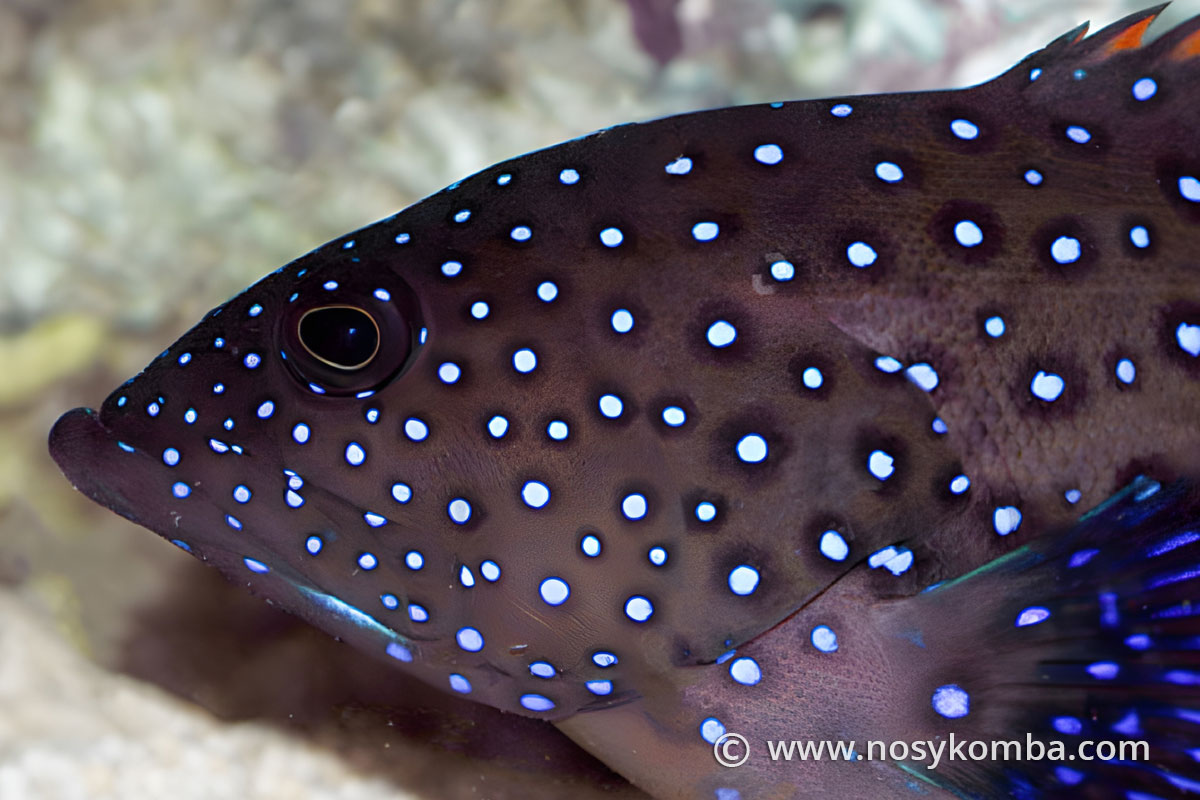
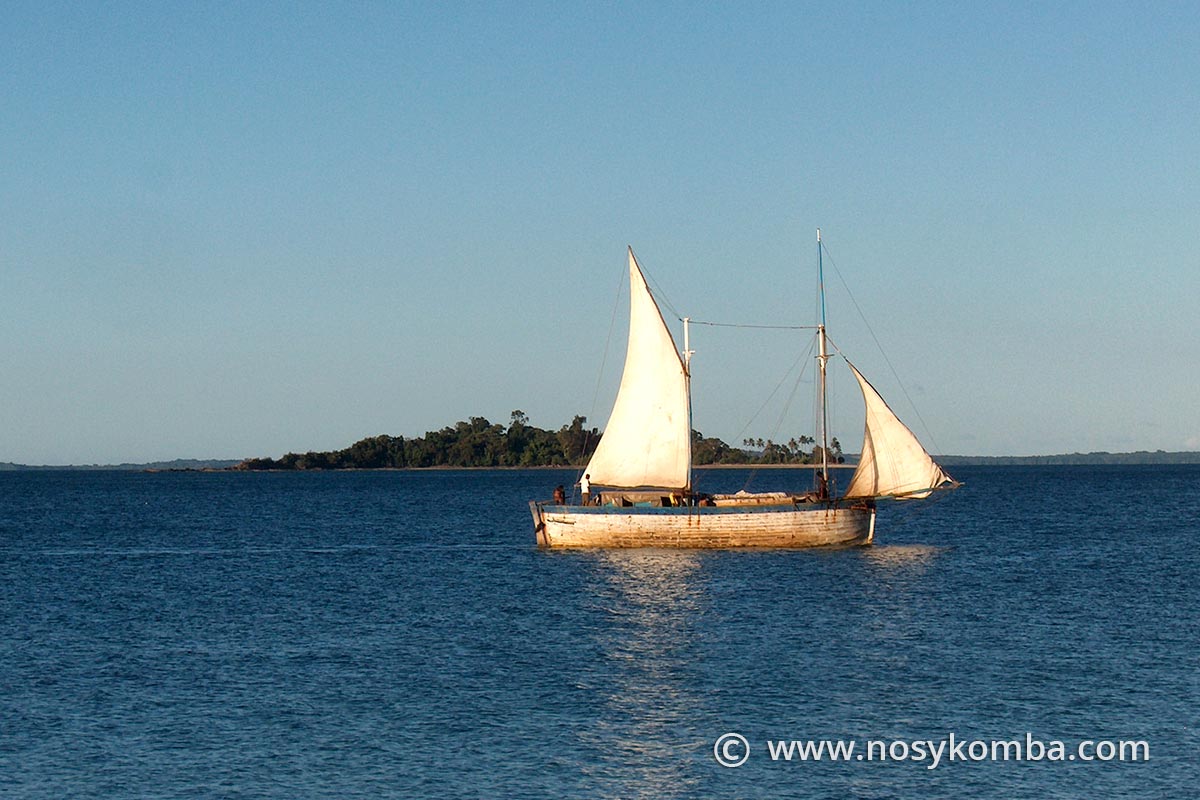
Diving centres : Safety and quality
Nosy Be is home to several diving centres offering quality services.
What the local centres offer:
- International certifications: PADI and CMAS for all levels.
- Experienced guides: In-depth knowledge of the dive sites and local fauna.
- Modern facilities: Well-maintained to guarantee safety and comfort.
Environmental commitment
These centres support marine protection initiatives and encourage respectful practices, such as avoiding contact with coral and observing wildlife from a distance.
Tips: Preparing for your trip
-
Formalities and transport
Nosy Be is accessible via its international airport, with direct flights from several major cities. From there, taxis will take you to your hotel in 20 minutes or to the port to cross over by boat to Nosy Komba in 20 minutes.
-
Accommodation
There is a wide range of accommodation on offer, from eco-friendly ecolodges to luxury hotels with breathtaking ocean views.
-
Health and safety
- Diving insurance: Essential to cover any incidents.
- Medical centres: Find out about centres equipped to treat diving-related accidents.
-
Equipment
You can bring your own equipment if you are a regular diver. Otherwise, local centres hire out everything you need for tropical waters.
A few tips for responsible diving
Preserving marine ecosystems is essential to ensure that these natural wonders remain intact for future generations. Here are a few simple tips:
- Never touch coral or marine animals.
- Pick up your own rubbish (and that of others if possible).
- Follow the instructions of local guides.
